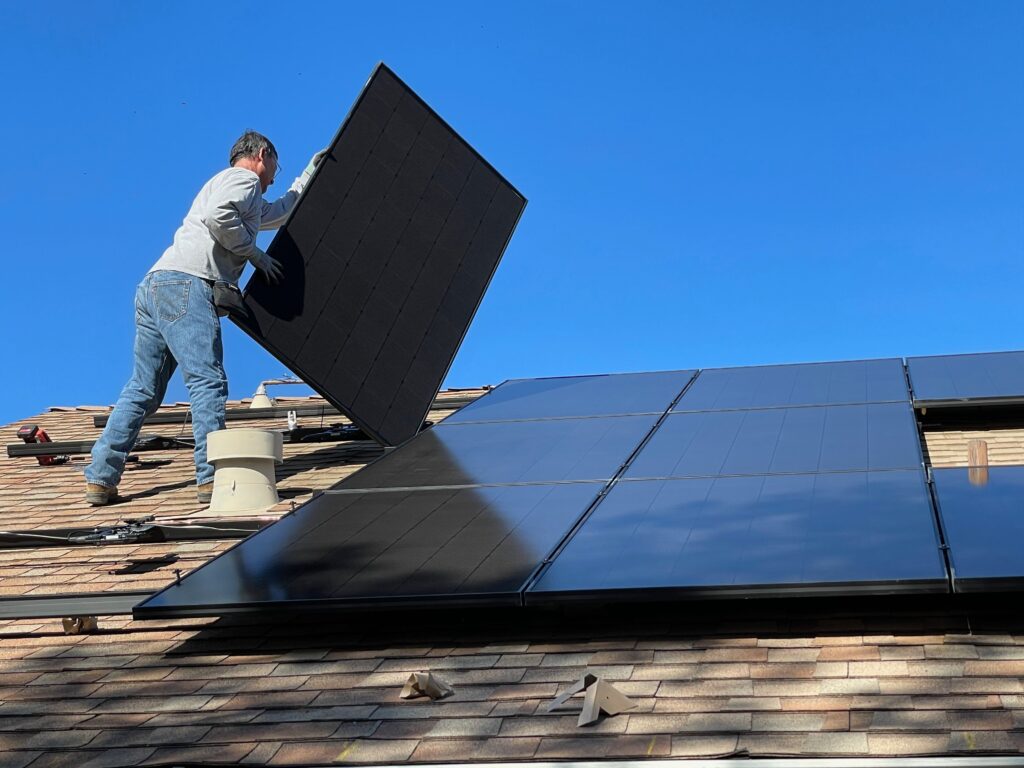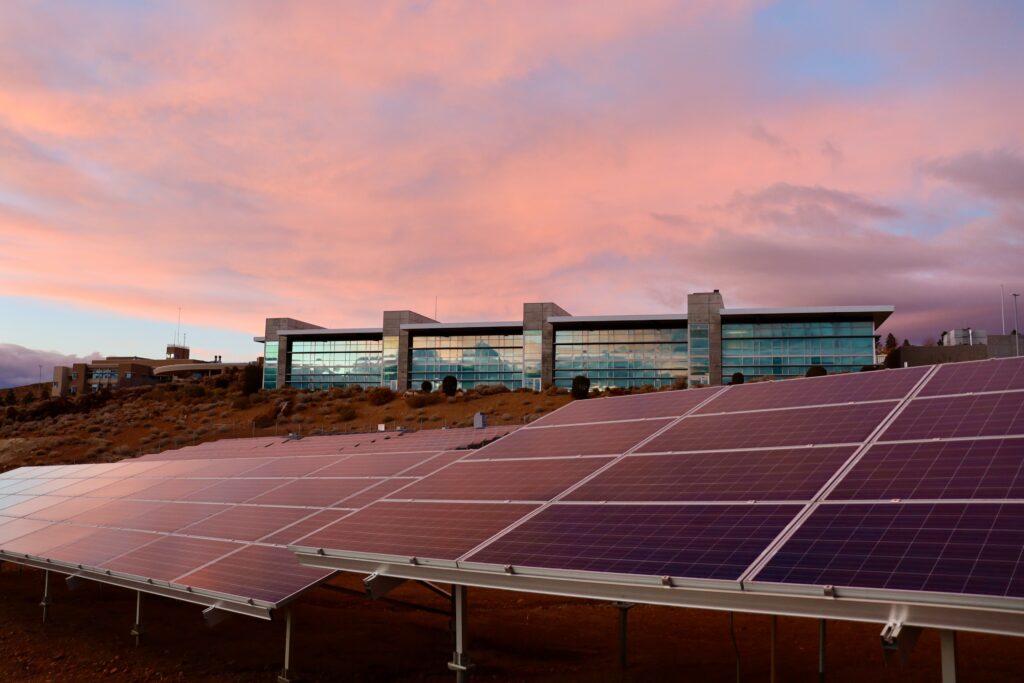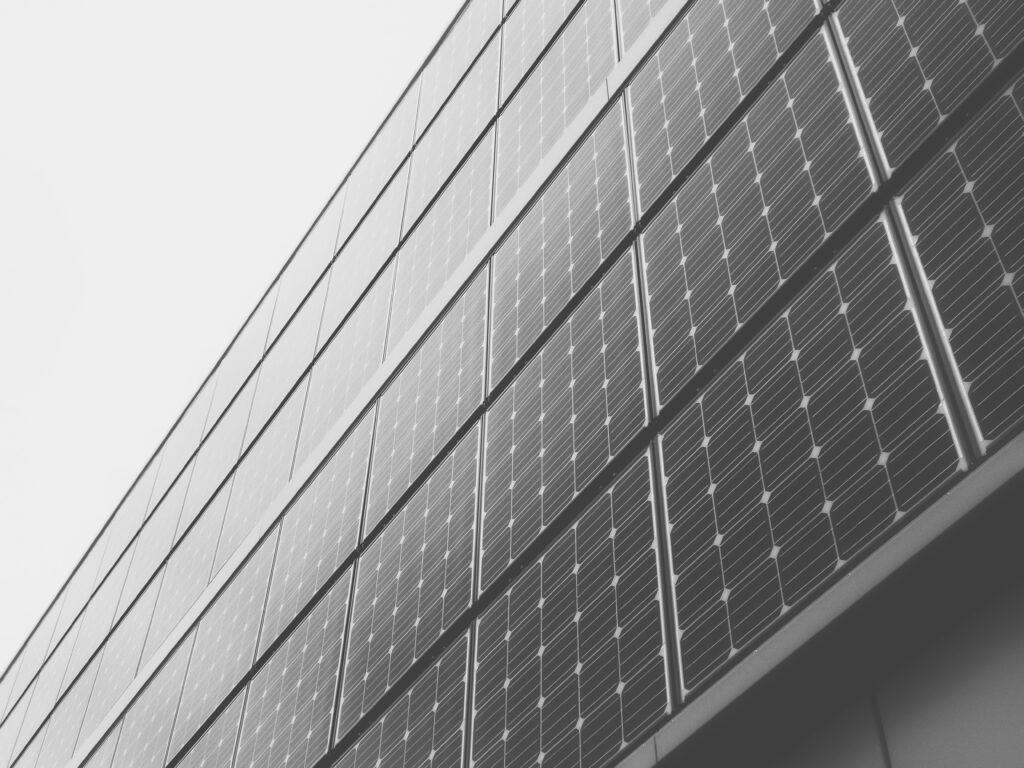Imagine you harnessing the power of the sun, transforming its energy into electricity. That’s the magic of solar panels. But have you ever wondered at what temperature these remarkable devices operate at their peak efficiency? Well, wonder no more! In this article, we will unravel the ideal temperature range for solar panels, allowing you to maximize their potential and make the most out of this eco-friendly energy source. So, buckle up and get ready to unlock the secrets behind solar panels’ optimal performance!

Understanding Solar Panel Efficiency
Solar panel efficiency refers to the ability of solar panels to convert sunlight into usable electricity. Put simply, it measures how effectively the panels can generate electrical power from the available sunlight. Higher efficiency translates into more electricity being produced, making solar panels a more viable and cost-effective renewable energy option.
Factors Affecting Solar Panel Efficiency
Several factors influence the efficiency of solar panels. Understanding these factors is crucial for optimizing the performance of solar panels and maximizing their electricity generation potential.
How Temperature Influences Solar Panel Efficiency
Temperature plays a significant role in solar panel efficiency. Solar panels are designed to operate optimally under specific temperature conditions. As the temperature rises, the efficiency of solar panels tends to decrease. On the other hand, extremely low temperatures can also affect their performance.
How Heat Affects Physical Properties of Solar Panels
Solar panels are made up of various materials, such as silicon cells, glass, and metal frames. When exposed to high temperatures, these materials can expand, contract, or undergo thermal stress. Such changes in physical properties can lead to reduced efficiency and potential damage to the panels over time.
Thermal Coefficient of Solar Panels
The thermal coefficient is a measure of how temperature affects the performance of solar panels. It quantifies how much the electrical output of a solar panel decreases per degree rise in temperature. The lower the thermal coefficient, the better the panel’s temperature resistance and overall efficiency.
The Ideal Temperature for Solar Panel Efficiency
Research has shown that solar panels perform optimally at certain temperature ranges. While these ranges might vary slightly, depending on various factors, there are some general guidelines to consider.
Research Findings on Optimal Solar Panel Temperature
Studies have indicated that solar panels generally operate at their highest efficiency when the ambient temperature is around 25 to 30 degrees Celsius (77 to 86 degrees Fahrenheit). At temperatures significantly higher or lower than this range, the efficiency tends to decline.
Role of Geographic Location in Defining Ideal Temperatures
Geographic location plays a crucial role in determining the ideal temperature range for solar panel efficiency. Areas with cooler climates may experience higher efficiency due to lower temperatures, while regions with hot climates may face efficiency challenges due to increased heat.
Solar Panel Performance in Cold Temperatures
Although solar panels are efficient in generating electricity in cold temperatures, extreme cold can pose some challenges. Understanding the effects of cold on solar panel efficiency and implementing specific measures can help maximize their performance even in frosty conditions.
Effect of Cold on Solar Panel Efficiency
In cold temperatures, solar panels have been observed to produce electricity more efficiently than under hotter conditions. Cold temperatures can increase the conductivity of the solar panel materials, allowing for better electron flow and enhanced electricity generation. However, extreme cold temperatures can also reduce battery performance and impact overall system efficiency.
Tips to Increase Efficiency of Solar Panels in Cold Conditions
To counteract the negative impacts of extreme cold temperatures, there are several strategies to enhance solar panel efficiency in cold conditions:
- Regular snow removal: Clearing snow buildup from solar panels ensures maximum exposure to sunlight and optimizes electricity generation.
- Tilted panel orientation: Adjusting the angle of solar panels slightly can help prevent snow accumulation and improve overall performance.
- Battery optimization: Implementing battery heaters or insulating batteries can maintain their efficiency in cold temperatures.

Solar Panel Performance in High Temperatures
Solar panels face different challenges in regions with high temperatures and intense sunlight. Understanding the impact of heat on solar panel efficiency and implementing cooling techniques can mitigate the negative effects and maintain optimal performance.
Effect of Heat on Solar Panel Efficiency
As temperature rises, the efficiency of solar panels tends to decrease. High temperatures can cause electron leakage, leading to reduced electron flow and lower electricity production. Additionally, prolonged exposure to high temperatures can degrade solar panel materials and shorten their lifespan.
Cooling Techniques for Solar Panels in Hot Regions
To combat the negative effects of excessive heat, various cooling techniques can be implemented:
- Passive cooling methods: Reflective coatings, ventilation, and shade structures can help dissipate heat and keep solar panel temperature within the ideal range.
- Active cooling methods: Water circulation systems, also known as water cooling or liquid cooling, can improve solar panel efficiency by dissipating excess heat.
Comparing Solar Panel Efficiency in Different Climates
Efficiency levels of solar panels can vary significantly depending on the climatic conditions of the location. Understanding the specific challenges and advantages of different climates is important when considering solar panel installations.
Efficiency in Tropical Climates
Tropical climates often experience high temperatures and intense sunlight, which can negatively impact solar panel efficiency. However, the ample sunlight availability can compensate for the reduced efficiency, making solar panels still a viable option for generating electricity.
Efficiency in Temperate Climates
Temperate climates generally offer favorable conditions for solar panel efficiency. Moderate temperatures, combined with sufficient sunlight, provide a conducive environment for optimal electricity generation.
Efficiency in Polar Climates
Polar climates present unique challenges for solar panel efficiency due to extreme cold temperatures and limited sunlight. In such regions, additional considerations like snow removal and adjusting panel angles become crucial to maximize energy production.

Materials and Solar Panel Temperature Range
The materials used in the construction of solar panels play a pivotal role in determining their working temperature range. Different materials have varying temperature resistance, which can impact the overall performance and efficiency of solar panels.
Comparison of Different Solar Panel Materials
Solar panels can be made using different materials such as monocrystalline silicon, polycrystalline silicon, and thin-film technologies. Each material possesses unique characteristics, including temperature resistance, which affect their efficiency and performance under varying temperatures.
How Materials Define the Working Temperature Range of Solar Panels
The choice of materials influences the operational temperature range of solar panels. Some materials perform better at higher temperatures, while others excel in lower temperature conditions. Optimal material selection is essential to ensure effective performance across different temperature environments.
Innovations to Improve Solar Panel Efficiency at Different Temperatures
Advancements in technology continue to address the challenges faced by solar panels in different temperature conditions. Various innovations have been developed to improve efficiency and performance across a broader range of temperatures.
Technological Advancements Addressing Temperature Issues
Researchers and manufacturers are exploring innovative techniques to enhance solar panel efficiency in different temperature conditions. Some advancements include:
- Multi-junction solar cells: These cells can better harness a wider spectrum of sunlight and perform well even under high-temperature conditions.
- Anti-reflective coatings: Coatings applied to the surface of solar panels help reduce heat absorption and improve overall efficiency.
- Thermo-electric cooling: Integrating thermoelectric materials within solar panels helps regulate temperature and increase their efficiency.
Future Outlook on Temperature-Resistant Solar Panels
The future looks promising for solar panel efficiency in various temperature conditions. Ongoing research and development aim to create temperature-resistant solar panels that can perform optimally across a wider range of temperatures. This will further enhance the viability and effectiveness of solar energy as a renewable power source.
Other Environmental Factors Affecting Solar Panel Efficiency
While temperature is a crucial factor, several other environmental conditions can also influence the efficiency of solar panels. Understanding these factors is essential for optimizing performance and maximizing electricity generation.
Influence of Wind
Wind can have both positive and negative impacts on solar panel efficiency. While a gentle breeze can help cool solar panels and increase their performance, strong winds can lead to mechanical stress and potentially damage the panels.
Role of Humidity
Humidity levels have minimal direct impact on solar panel efficiency. However, high humidity can lead to dust and dirt buildup on the surface of solar panels, reducing their overall performance over time. regular cleaning and maintenance can counteract this effect.
Impact of Light Intensity
The intensity of sunlight directly affects the efficiency of solar panels. Higher light intensity generally results in increased electricity generation. Factors like cloud cover and shading from nearby structures can limit the availability of direct sunlight, reducing panel efficiency.
Effects of Air Pollution
Air pollution, particularly the presence of fine particles and pollutants in the atmosphere, can reduce the amount of sunlight reaching the solar panels. This can hinder their efficiency and effectiveness in generating electricity. Regular cleaning and periodic maintenance can mitigate the impact of air pollution.
Summary and Conclusion
solar panel efficiency is a crucial factor to consider when harnessing solar energy. Factors like temperature, geographic location, and environmental conditions significantly impact the efficiency and overall performance of solar panels.
Understanding the influence of temperature on solar panel efficiency is key to maximizing their electricity generation potential. Research findings suggest that an ideal temperature range of around 25 to 30 degrees Celsius (77 to 86 degrees Fahrenheit) leads to optimum efficiency.
In cold temperatures, solar panels tend to produce electricity more efficiently, but extreme cold can affect overall system performance. Regular snow removal, tilted panel orientation, and battery optimization can help enhance efficiency in cold conditions.
In high-temperature regions, heat can reduce solar panel efficiency. Implementing cooling techniques like passive and active cooling methods can help mitigate the negative effects of excessive heat.
Solar panel efficiency can vary in different climates. While tropical and polar climates present unique challenges, solar panels generally perform well in temperate climates.
Materials used in solar panel construction influence their temperature resistance and overall efficiency. Technological advancements continue to address temperature-related challenges and offer hope for more temperature-resistant solar panels in the future.
Other environmental factors like wind, humidity, light intensity, and air pollution can also impact solar panel efficiency. Regular maintenance and proper cleaning protocols help maintain optimal performance.
By understanding the relationship between temperature and solar panel efficiency and implementing practical recommendations, individuals and businesses can maximize the electricity generation potential of solar panels, contributing to a sustainable and cleaner future.




